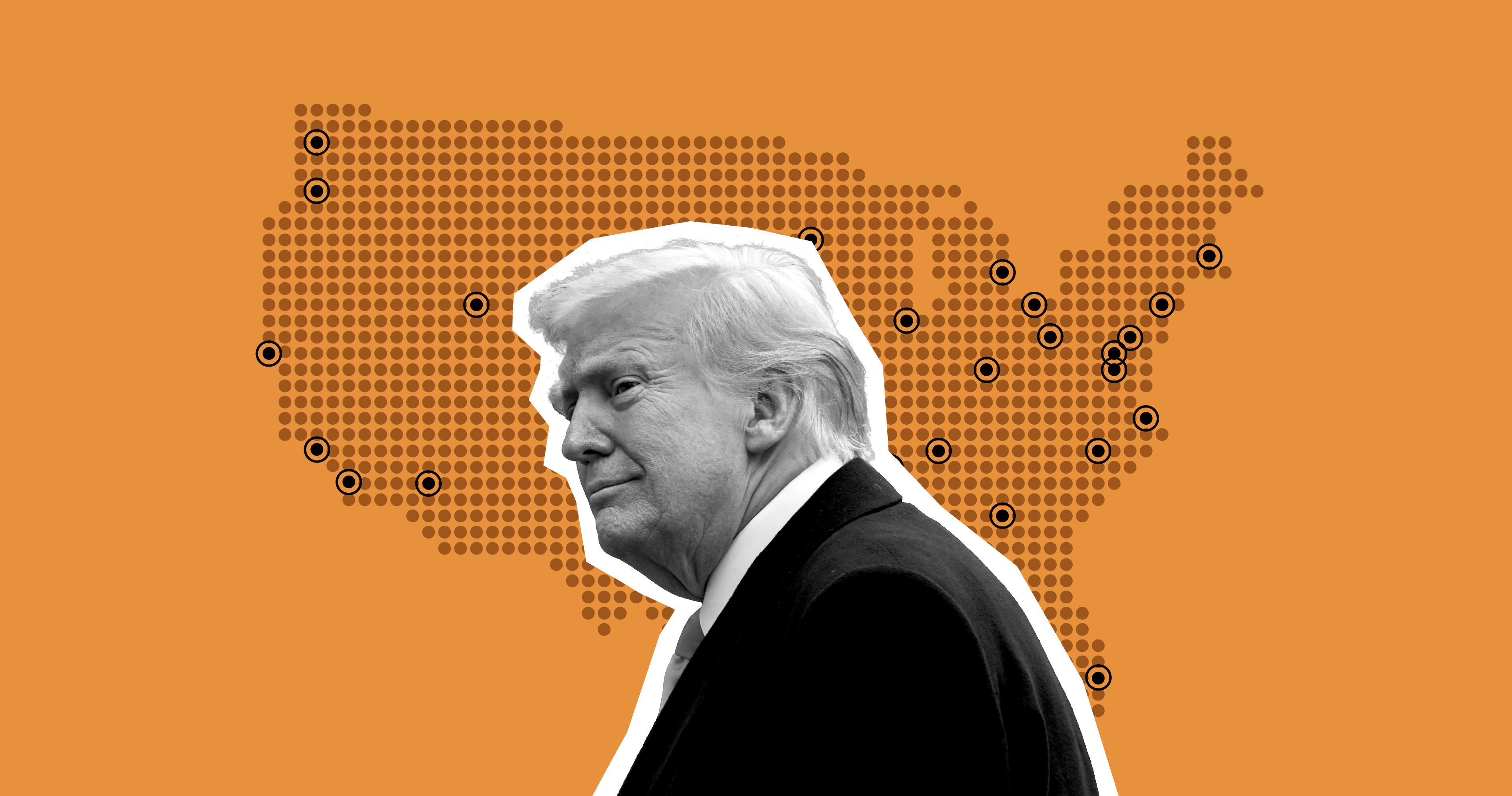
The Ripple Effect: Federal Job Cuts Under the Trump Administration Set to Impact Communities Nationwide
A looming wave of government job cuts, initiated during the Trump administration, is poised to send economic tremors across the United States, impacting not only the Washington, D.C., area but also a multitude of cities and towns dependent on federal employment. An analysis estimates that approximately 200,000 federal positions will be eliminated, resulting in a staggering $22 billion loss in federal wages nationwide this year alone. While the immediate impact will be felt acutely in the nation’s capital, the repercussions are expected to spread far beyond, affecting communities on the coasts, in the heartland, and everywhere in between.
A recent report by Oxford Economics, a reputable economic advisory firm, paints a concerning picture of the potential fallout. The report highlights the vulnerability of metropolitan areas with a strong Veterans Affairs (VA) presence, anticipating significant economic losses as the department undergoes substantial workforce reductions. Reuters reports that the VA plans to slash over 80,000 employees in an attempt to revert to 2019 staffing levels. This proposed reduction surpasses the scale of anticipated layoffs at other government agencies, signifying a concentrated blow to communities that rely on the VA’s economic footprint.
The Oxford Economics report underscores the disproportionate impact these cuts will have on the Washington, D.C., metropolitan area, projecting a loss of approximately 33,700 employees. This region, encompassing the District of Columbia, its surrounding suburbs in Maryland and Virginia, and Jefferson County, West Virginia, has long been a hub of federal employment. The departure of such a significant number of workers is likely to trigger a cascade of negative economic consequences, affecting local businesses, housing markets, and overall economic vitality.
However, the burden will not solely fall on the D.C. area. The VA, as the second-largest department in the federal government after the Department of Defense, maintains a vast network of health care facilities across the country. Many of these facilities are located in metropolitan areas with a significant military presence, making these communities particularly susceptible to the proposed cuts. In smaller cities, a VA hospital may serve as one of the largest employers, providing crucial jobs and driving local economic activity. The loss of these positions could have a devastating impact on the financial stability of these communities.
The report further emphasizes that many cities across the U.S. have a large concentration of federal employees, often clustered within one or two specific agencies. Consequently, the magnitude of departmental reductions will significantly impact these cities, particularly those with a higher percentage of employees within the affected departments. The economic stability of these communities is inextricably linked to the health and well-being of the federal workforce.
The nationwide impact of these job cuts is estimated to result in approximately 70,000 people becoming unemployed, leading to a projected increase of 0.04% in the U.S. unemployment rate. This figure is based on data from the Bureau of Labor Statistics, which allows researchers to track the movement of federal workers during previous periods of federal layoffs. This historical data provides valuable insights into the potential displacement and economic disruption caused by these workforce reductions.
Beyond the direct impact on federal employees, the report anticipates a substantial fallout in the private sector. In Washington, D.C., alone, a decrease in overall spending is expected to disproportionately affect consumer-facing sectors such as retail, leisure, and hospitality. As federal employees lose their jobs and reduce their spending, local businesses in these sectors are likely to experience a decline in revenue, potentially leading to further job losses and economic instability.
The Oxford Economics report leverages data from the Bureau of Labor Statistics and the Office of Personnel Management to compile its analysis. These data sources provide a comprehensive overview of federal employment patterns, workforce demographics, and economic indicators, allowing researchers to develop informed projections about the potential impact of the proposed job cuts.
The implications of these government job cuts extend far beyond the immediate loss of employment. They represent a significant shift in the economic landscape of numerous communities across the United States. The loss of federal wages, coupled with the anticipated decline in private sector activity, could have a long-lasting impact on local economies, potentially leading to reduced tax revenues, diminished public services, and increased economic hardship for residents.
The proposed cuts at the Department of Veterans Affairs raise particular concerns about the potential impact on veterans and their access to health care. The VA plays a critical role in providing medical services and support to veterans, many of whom rely on these services for their physical and mental well-being. Reducing the department’s workforce could compromise its ability to adequately serve the needs of veterans, potentially leading to delays in care, reduced access to specialized services, and increased strain on the existing healthcare system.
The potential consequences of these federal job cuts are far-reaching and multifaceted. They underscore the importance of carefully considering the economic and social implications of government policies, particularly those that involve significant workforce reductions. As the nation grapples with the challenges of economic recovery, it is crucial to prioritize policies that support job creation, promote economic stability, and ensure the well-being of all communities.
